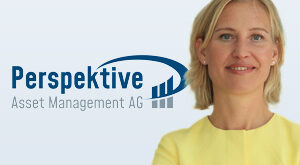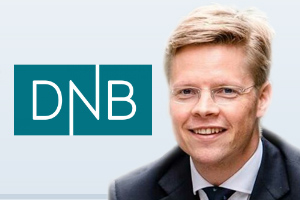
Im Juli entwickelte sich der Pictet SmartCity erfreulich und konnte eine bessere Performance als der globale Aktienmarkt verzeichnen. Besonders gut entwickelten sich Infrastrukturaktien, aber auch Immobilientitel trugen zu der Outperformance bei. In einem generell positiven Marktumfeld legte der Pictet – Smart City P EUR (WKN A1CYMG, ISIN LU0503634577) um +1,48 Prozent zu und schraubte seine Wertentwicklung im Jahresverlauf auf +12,96 Prozent. Pictet-FondsManager Ivo Weinöhrl berichtet für alle Investoren der FondsStrategie SJB Nachhaltig über die neuesten Entwicklungen in den Sektoren städtische Entwicklung, Infrastruktur und Lifestyle. Der aktuelle Monatsbericht thematisiert die FondsPerformance, die Veränderungen im Portfolio sowie den Ausblick für die Aktien, die von den Entwicklungen hin zur modernen Stadt profitieren.
Marktbericht
The month of July saw global equities trading up 0.7%, as measured by the MSCI All Country World Index (in USD). The US market continued its good performance for the year, adding 2.4%. In stark contrast, China’s equity market sold off sharply, down 13.8%. Beijing’s regulatory crackdown on industries, such as technology, education and property, could potentially signal a rebalancing of the economic profit pool towards labour at the expense of lower corporate profits. Other emerging markets in Asia and Latin America traded lower on concerns about the new Delta variant. Low vaccination rates, even in developed Asian countries such as Japan and Korea, put them at a higher risk for a new wave of Covid or preventative lockdowns. Consequently, developed equities continued their year-to-date outperformance over emerging equities. On a sector level, energy was the worst performing sector, losing 5.9%, albeit still being the best performing sector for the year, with a gain of 21.8%. IT, healthcare, materials and utilities all performed well. July was also positive for global bonds, which helped them to pare some of their year-to-date losses. The Fed reiterated its belief that higher inflation is “transitory”; and, therefore, it can be safely ignored. For the time being, interest rates will be held at 0% while the bond purchases of $120 billion per month continue.
Performance Analysis
During the month of July, the SmartCity strategy outperformed global equities. This result was driven by all three segments. While Running the City was strongest, Building the City and Living in the City also moderately outperformed. Running the City was particularly helped by Traditional Infrastructure, which was the best subsegment overall. Our holdings in the logistics real estate space reported very strong quarterly earnings as evidenced by both higher-than-expected rent growth as well as growth in property values. The main reason is the seemingly insatiable demand for the logistics space to respond to the continued strength in e-commerce across geographies. Living in the City contained both the second best subsegment, Housing Solutions, as well as the biggest detractor, Urban Lifestyles. Housing Solutions was propelled by residential landlords’ rising shares prices across the US and Europe. While the US property market rebounded strongly after a Covid-induced downturn last year, its European counterpart behaved much more stable. However, European residential landlords saw their share prices rise, mainly due to prior underperformance. On the negative side, Urban Lifestyles proved to be a detractor. While we exited our holding in a Chinese education provider before its big collapse (see next paragraph), we still recorded a negative performance impact.
Portfolio-Activity – Overweightings and Underweightings
During the month, we significantly reduced our exposure to Chinese equities. We owned quality companies with competitive advantages and dominant market positions in real estate, education, healthcare and e-commerce. Regarding the education sector, we had previously held the view that the leaders in the space would weather regulatory scrutiny better than their poorly run and undercapitalized smaller competitors. However, when we started seeing local Chinese provinces implementing harsh restrictions on private education firms, we assumed that they were anticipating central government policy and exited our position. A few days later, the central government announced a ban of for-profit education. For the moment, it appears to us that the education industry is only part of a larger shift in Beijing’s governance priorities to balance growth and sustainability by tackling social inequality with a major regulatory reset. Size, pricing power and high customer switching cost, all attributes which we generally look for in our investments, have become a major risk factor. We built positions in two US stocks instead. The first one, a provider of heating, ventilation and air conditioning (HVAC), is exposed to structural growth drivers. The second one, a healthy convenience food chain, has emerged as a crisis-winner due to its strong digital ordering and customer engagement capabilities.
Market Outlook
The secular outlook for the three building blocks of our SmartCity strategy remains highly attractive. Cities around the globe have recognized the need to invest in their aging infrastructure and deploy smarter solutions and technologies to improve their citizens’ quality of life. The current health crisis has accelerated many trends, such as the adoption of digital solutions in almost all areas of our daily lives, by several years and will provide a tailwind for the providers of those solutions for years to come. With vaccination campaigns gaining traction, equity markets rewarded businesses that are set to benefit from economic reopening in the first quarter of the year, alongside cyclical companies and perceived beneficiaries of higher inflation. With new virus variants emerging and growth and inflation potentially peaking, the past several months have seen a comeback of more growth oriented and defensive businesses. We think that we will remain in this tug-of-war between different investment styles for some time to come. We thus remain prudent and adhere to our disciplined investment approach trying to identify long-term winners in their respective fields that we think will fare well across economic and market cycles and increasing our stakes in those companies if and when opportunities arise.
Portfolio Strategy
Our goal is to gain exposure to companies that stand to benefit most from their ability to provide solutions to the meaningful challenges posed by rapid urbanization as well as changing demographics and consumer lifestyles. In light of fast-growing populations, cities around the world will have to undertake investments to protect human well-being and promote environmental sustainability. We find companies across a wide variety of sectors that make cities smarter, i.e. more efficient, sustainable, safer or better adapted to their citizens’ needs. The investment strategy is unconstrained across geographies, market capitalizations or sectors.
Pictet – Smart City Management Team
Ivo Weinoehrl
Lucia Macaccaro




